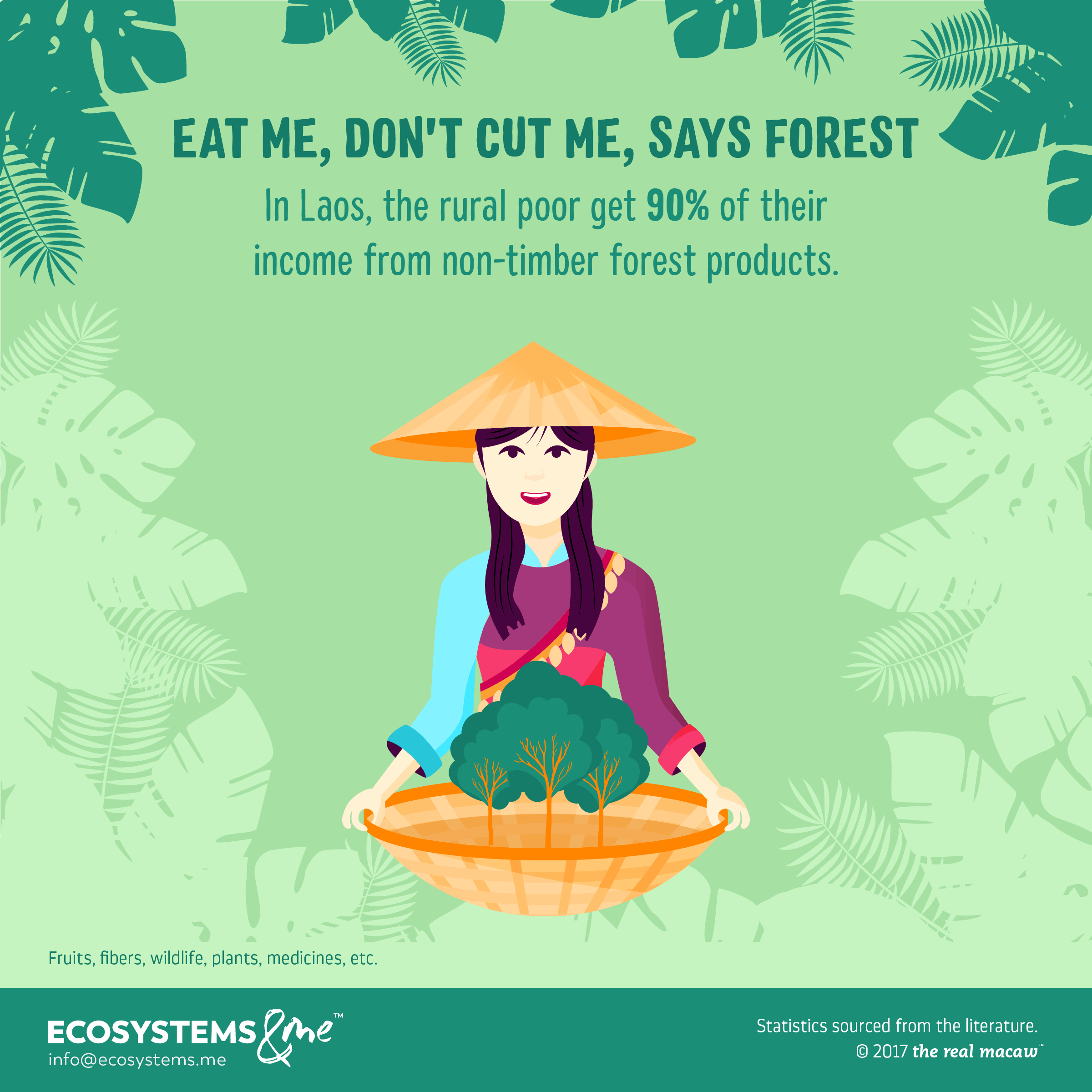
Forests often provide income for rural communities. But for the rural poor in Laos, they provide as much as 90% of income. People living in or near forests collect, eat, and sell non-timber forest products (NTFPs), such as fruits, fibers, plants, shoots, roots, and medicines, and maybe even some insects. In Laos, NTFPs include cardamom (the third most expensive spice in the world!), plus fish, wildlife, resin, rattan, and tree barks.
NTFPs and rural income: How they work together
We call NTFPs provisioning services, and they help people in rural areas maintain their quality of life. Poverty is often an issue in these areas, because there are few jobs, and incomes are low. But forests and NTFPs support food security, poverty alleviation, income, shelter, health, resilience to extreme events, and many more. People are less affected by an unreliable supply of food and fuels if they can just pop into the forest to gather what they need. Anything extra, they can sell or trade, helping them increase their income.
As for extreme events, it’s the same idea. Food and fuels (like charcoal or firewood) gathered from forests are insurance against crop failures, food shortages, and natural disasters. With climate change making these more likely, resilience is even more important. If they don’t have that buffer, rural residents may slip (further) into poverty.
Measuring NTFP income
These things are hard to measure, because they’re mostly outside mainstream statistics and surveys like tax returns, economic assessments, and so on. On the other hand, it’s really easy to measure the value of formal industries like logging. Since these look like major economic drivers, they usually get all the attention.
But without counting the huge contribution of non-timber forest products to rural income, you only have half the picture. That leads to badly informed decisions about what activities to prioritize, and in Laos, prioritizing logging has caused a lot of deforestation, mostly for timber export. To make things worse, much of it is illegal.
Eat me, don’t cut me
It doesn’t have to be this way. Forests in Laos support the rural poor and provide a lot of their income. Don’t cut them down. They’re food.
